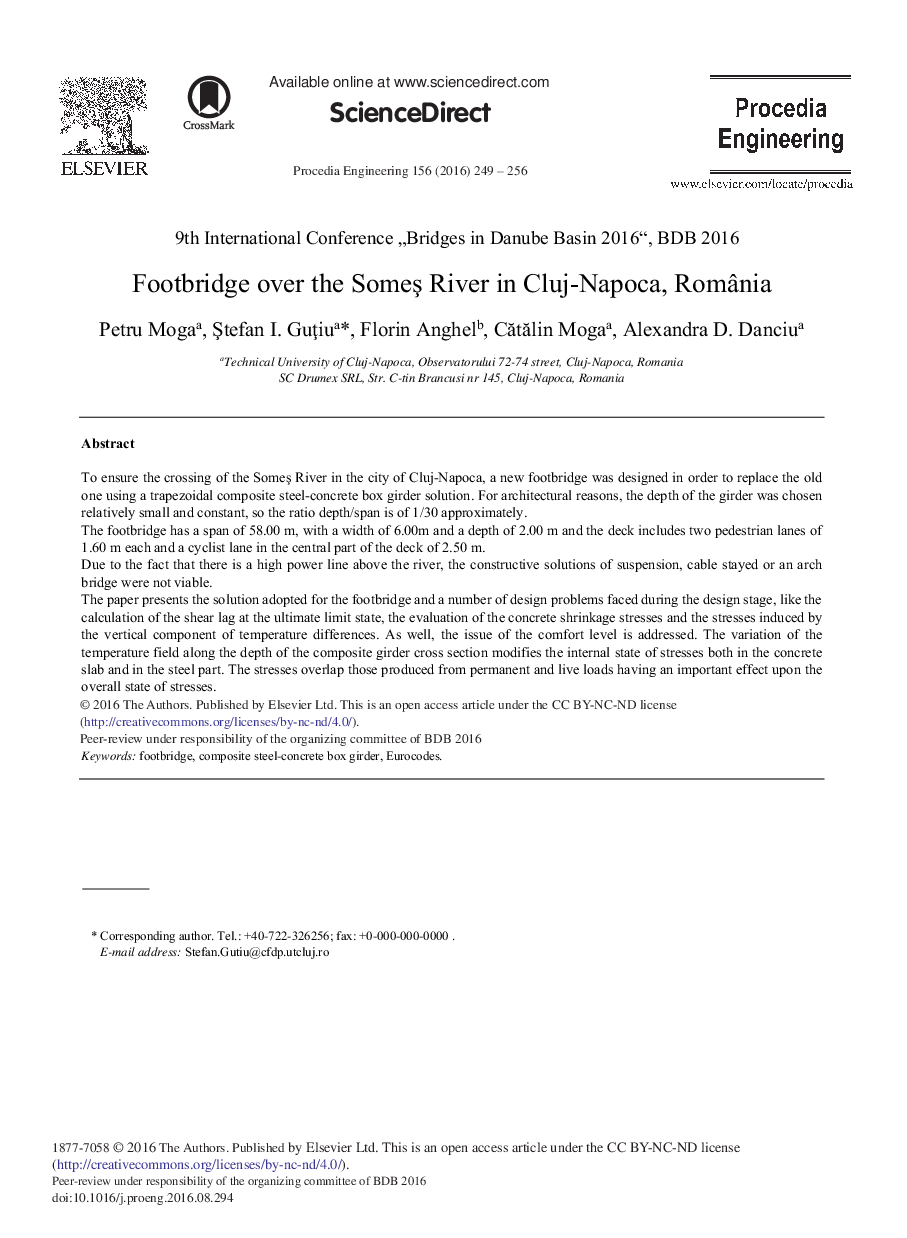| Article ID | Journal | Published Year | Pages | File Type |
|---|---|---|---|---|
| 5030156 | Procedia Engineering | 2016 | 8 Pages |
To ensure the crossing of the SomeÅ River in the city of Cluj-Napoca, a new footbridge was designed in order to replace the old one using a trapezoidal composite steel-concrete box girder solution. For architectural reasons, the depth of the girder was chosen relatively small and constant, so the ratio depth/span is of 1/30 approximately.The footbridge has a span of 58.00 m, with a width of 6.00m and a depth of 2.00 m and the deck includes two pedestrian lanes of 1.60 m each and a cyclist lane in the central part of the deck of 2.50 m.Due to the fact that there is a high power line above the river, the constructive solutions of suspension, cable stayed or an arch bridge were not viable.The paper presents the solution adopted for the footbridge and a number of design problems faced during the design stage, like the calculation of the shear lag at the ultimate limit state, the evaluation of the concrete shrinkage stresses and the stresses induced by the vertical component of temperature differences. As well, the issue of the comfort level is addressed. The variation of the temperature field along the depth of the composite girder cross section modifies the internal state of stresses both in the concrete slab and in the steel part. The stresses overlap those produced from permanent and live loads having an important effect upon the overall state of stresses.
